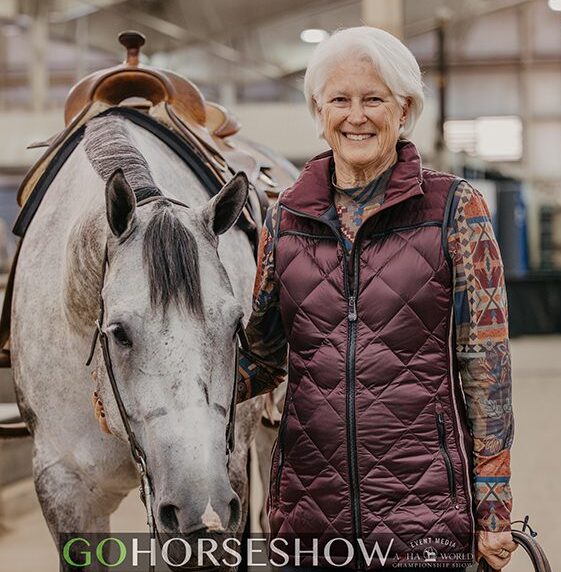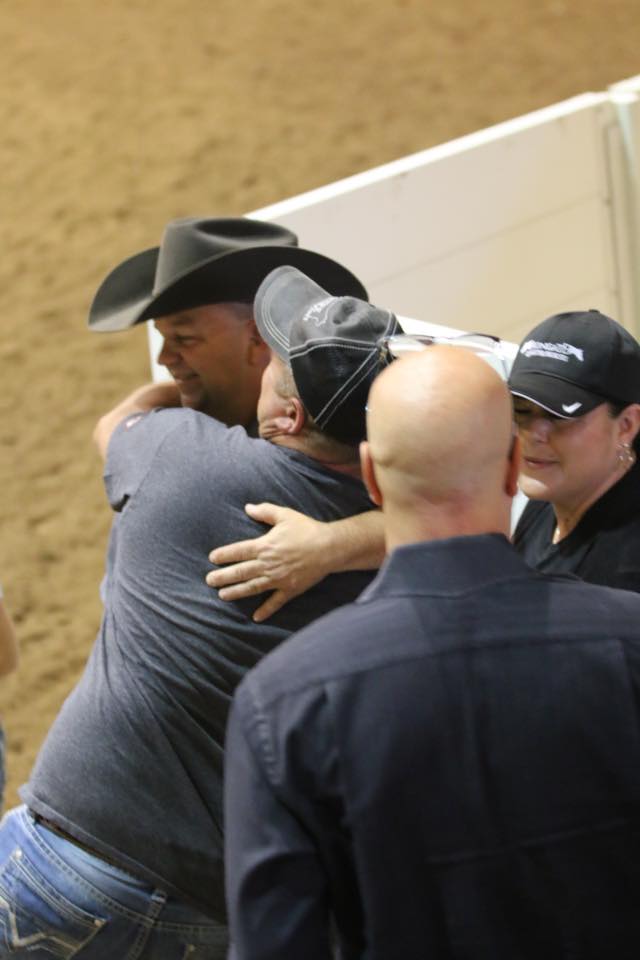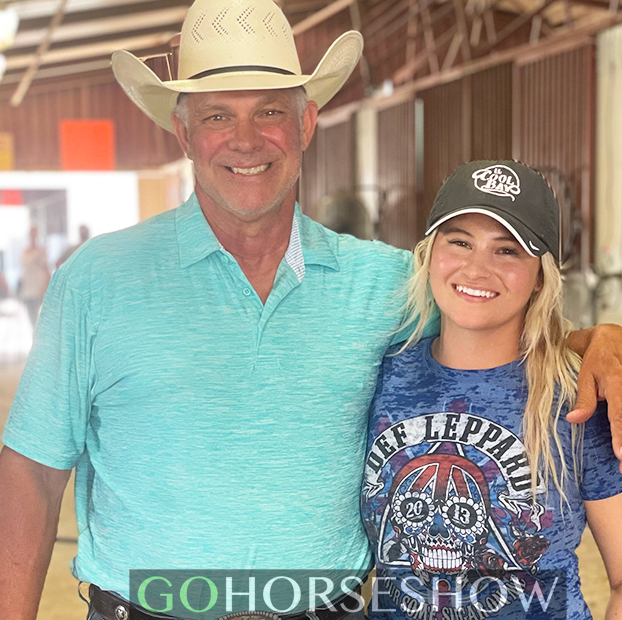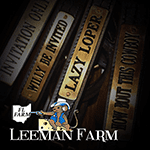The year’s Olympics in Paris had several examples of the highs and lows of tough competition. Certain competitors could bounce back quickly from mistakes, while others could never recover. Simone Biles, one of the greatest gymnasts of all time, constantly makes mistakes due to the high difficulty level in her routines, yet she can come back from big mistakes and still win.
Many patterns executed by equestrians are also complicated. Some exhibitors seem to handle obstacles and problems without missing a beat, while others cave to the pressure and fall apart. Why is that? What do winners have that others don’t?
Every rider feels frustrated leaving the arena after making a mistake or blowing a class from time-to-time. It happens to all of us, whether you are a novice starting out or a multiple world champion.
The most important part of making a mistake is how you react afterward. Pushing past that anger and disappointment is vital to becoming a champion in the show pen.
GoHorseShow talked to some of the most accomplished horse people in the industry and compiled five ways to bounce back after a frustrating mistake.
Learn a Lesson
Don’t take a mistake as something terrible. Mistakes make better riders. Reframe it into a positive. Ohio Trainer Missy Thyfault says, “Use it as a lesson on how not to do something, use it as a building block on your way up, kick some dirt on it, and move on. Please don’t dwell on it, because everyone makes mistakes. It’s part of the pathway to success.”
 “Ride every stride, ride what your horse gives you, and keep riding despite a bauble” are all lessons veteran amateur exhibitor Kathy Tobin has learned.
“Ride every stride, ride what your horse gives you, and keep riding despite a bauble” are all lessons veteran amateur exhibitor Kathy Tobin has learned.
Select Amateur Joe Whitt adds, “I have learned that every horse is different, and you must ride the horse you have to the best of your ability. I have tried to get to know each horse and bond with them. I’ve learned that each horse takes time, and you must respect their timeline.”
Amateur Jenna Tolson says, “As cliché as it sounds, the strength is in the struggle, and personal growth doesn’t come from our comfort zones. I’ve rarely had an easy horse to show. Some were difficult horses, and others were not great in the show pen. As frustrating and demoralizing as it has been, it has forced me to grow as a rider.”
Johnna Letchworth-Clark echoes Jenna’s thoughts. “The only way to grow is to make mistakes. You learn from them. Take them and teach yourself how never to let them happen again.”

Surround Yourself with Supporters
One of the biggest problems some may face is coaches and/or parents who punish the rider for mistakes. They aren’t allowed to make mistakes or learn from them. It is ingrained into their brains that mistakes are wrong and the end of everything.
Motivational speaker Sonia Ricotti once said, “Accept what is, let go of what was, and have faith in what will be.”
Pining over the mistakes you make is not conducive to a productive show career. Accept what had happened, no matter how minor or significant the error. The best way to achieve this is by realizing that everyone makes mistakes, including yourself. No matter how talented an equestrian you are, it is impossible to change the past.
Perfectionism has no business in horse showing. Riders must be allowed to make mistakes and need people around them who will enable them to grow and learn from their mistakes.
The infamous horse show stage moms and dads are often toxic, and their intense pressure leads to errors and the riders feeling bad about themselves. You must have cheerleaders who have your best intentions in mind and want you to succeed. They need to be behind you, even if you fail. Also, respond compassionately: Be kind to yourself and remember that everyone makes mistakes.
Have Fun
Remembering to have fun also serves as a reminder that showing horses is supposed to be fun. It is a hobby, a lifestyle, and you aren’t curing cancer or trying to save someone’s life. Tomorrow is a new day.
 “You have to keep going,” Letchworth said. “You have to keep practicing and learn from your mistakes. Take them and grow. Please don’t be so hard on yourself that it isn’t fun. This is supposed to be a fun thing, not a pressured thing.”
“You have to keep going,” Letchworth said. “You have to keep practicing and learn from your mistakes. Take them and grow. Please don’t be so hard on yourself that it isn’t fun. This is supposed to be a fun thing, not a pressured thing.”
Youth exhibitor Violet Shetler says you need to treat shows like the Congress and AQHA World Show like any other. “It is easy to get overwhelmed in the environment, but it’s important not to put much pressure on yourself. There’s always the next show, so enjoy it.”
When all the practicing is done, and it’s finally time to show, Trainer Maryah Cugno reminds customers of the value of manifesting their results and visualizing their success. “And I’m always sure to tell them to have fun when they enter the pen because that’s what we’re here for!”
Simulate the Pattern
Suppose you make mistakes remembering complex patterns or freeze in big moments. In that case, visualizing the pattern beforehand in your head over and over and imagining your victory lap and a joyous, nice ride will help keep you in the right mindset. Also, walking the pattern, whether a showmanship or trail pattern, is crucial in developing confidence before entering the show pen.
 “I would imagine loping down that white wall and imagining every stride and move that my horse would make,” trainer Troy Compton reflects. “I would know exactly how close I wanted his front feet to be to the wall, exactly how I wanted to pass a horse. I would know every possible move my horse would make and how I would ride it to the best of its ability.”
“I would imagine loping down that white wall and imagining every stride and move that my horse would make,” trainer Troy Compton reflects. “I would know exactly how close I wanted his front feet to be to the wall, exactly how I wanted to pass a horse. I would know every possible move my horse would make and how I would ride it to the best of its ability.”
By doing this, Compton said he would feel almost relieved when he walked into the pen because he had done so much mental prep work leading up to it.
Go Back to Basics
Remember what you have learned during your practice sessions. It helps riders develop muscle memory that may help them when they are under intense pressure and need a good ride.
 Another way to mitigate anxiety is to treat show day just like you would treat any regular practice day. “By creating a process from the moment you pull your horse out of your stall that continues until you unsaddle and put them back into the stall, you can help to keep your nerves even keel,” Troy said.
Another way to mitigate anxiety is to treat show day just like you would treat any regular practice day. “By creating a process from the moment you pull your horse out of your stall that continues until you unsaddle and put them back into the stall, you can help to keep your nerves even keel,” Troy said.
This allows your mind and body to work comfortably with your horse, which is almost second nature. This comfort level helps to reduce anxiety and mistakes because you are doing what comes naturally to you.
“You want to make your execution at home as close to perfect as possible, so that becomes a habit in the ring. Homework is your biggest advantage. Work on your skills and connection, and minimize or eliminate those problem areas,” explains trainer Jenell Pogue.
Amateur Paige Wacker reiterates this by adding, “Horses are so in tune with our energy, and the moment they feel our stress, they react exactly to how we’re feeling. Instead of using that fear as negative energy, I try to make positive energy with it. I do that by working extremely hard at home on all the maneuvers we will be expected to perform in the class.”
By doing the hard work at home, you will be ready for whatever they can ask you to perform when the big show day comes.
####
How do you bounce back from mistakes? We’d love to know what works for you. Let us know in our social media comments.









